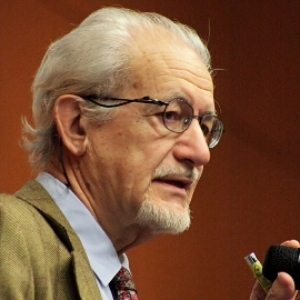Title : The EVA technique in analytical biochemistry
Abstract:
The EVA methodology that will be presented consists in a hydrophilic polymer of ethylene-vinyl acetate (this is the origin of the acronym EVA) admixed with very fine particles of solid-phase sorbents (strong anion and cation exchangers added with hydrophobic resins such as C8 and C18). These diskettes, when applied to surfaces of items (paper, parchment, canvasses) belonging to the word Cultural Heritage, can capture ultra-minute amounts for proper chemical identification (such as via GC-MS, LC-MS, X-ray). The unique advantage of this probing technique is that it has been proven not to contaminate nor damage any of these precious items stored in museums, libraries, private collections, contrary to other harvesting techniques (e.g. by scraping or rubbing, such as in Collins’s methodology) that are intrinsically damaging. The capture is secured via standard non-covalent bonding (ion-to-ion and hydrophobic interactions as well as hydrogen bonding). EVA is a peculiar chromatographic technique that could be classified as a mixed-bed column. It is based on the use of multiple sorbents mixed together and packed in a single column. Thus EVA diskettes can be assimilated to these mixed-bed packed columns except that they are in a form of a solid state cartridge. In a most recent version, also combinatorial peptide ligand library (CPLL) resins have been admixed to the standard sorbents described above. Thus this novel variant contains several millions of diversified beads able to capture, for instance, also very minor polypeptides in presence of high-abundance proteins. The EVA technique has been applied to the screening of manuscript from famous authors (Bulgakov, Chekhov, Casanova, Jack London, Kepler, Orwell, Stalin) as well as to archaeological items (Egyptian mummies, Dead Sea Scrolls, the Aleppo codex) with extraordinary and quite unexpected results."
Audience Take Away:
- Anyone in the audience will be able to synthesize their own EVA diskettes, since the chemistry is quite facile and all ingredients are commercially available.
- Any scientist interested in Cultural Heritage can propose the EVA technique and use it in any public or private collection, since this method is non-contaminating nor destructive. On the contrary M. J. Collins’s rubbing method (Proc. Natl. Acad. Sci. USA 112, 2015, 15066-15071) will not have citizenship in any museum or public library since it will surely damage all items under investigation. Given the unique ability of these EVA diskettes to capture ultra-minute amounts of surface material, it will permit identification of, e.g., pigments adopted in canvasses, ink in famous scripts etc. via current instrumental analysis (e.g., mass spectrometry etc.). At present there does not seem to be any other alternative for exploring in full safety any precious document belonging to the word Cultural Heritage.




